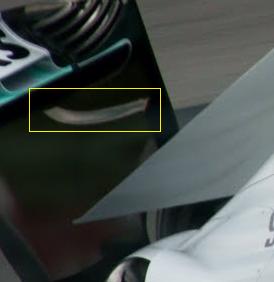ggajic wrote:If Bridgestone will leave F1 at the end of year I don't think that Mercedes will invest much into further car development. But then again it is much up to suspension how car will handle tires. In my opinion Bridgestone has no intention to improve their tires either (since they are leaving). Quality of their rubber was always questionable. For the record, Audi on 2010 24h Le Mans (fastest in history) used one set of Michelin tires per 491km and clocked average speed of 226km/h. Just to mention that Le Mans prototypes are heavier then F1 cars..
Not a very good analogy! The tyres for Le Mans are designed with harder compounds, so as to minimise tyre changes. F1 tyres are purposely far softer, as they only have to last an average of 150 miles, and they provide far more cornering grip. After all, my Jaguar is far heavier, and the tyres seem to last 15k miles.
In other words, the Audis drive according to their tyres grip. Put F1 tyres on them, they would be far, far faster, but would have to fit new tyres, every couple of laps!






